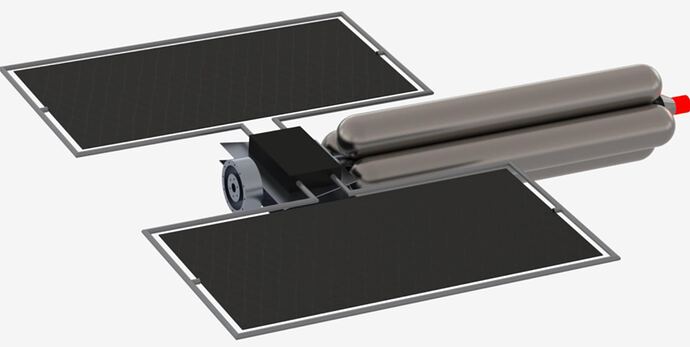The NASA Innovative Advanced Concepts (NAIC) program provides seed funding for “innovative, technically credible, advanced concepts that could one day ‘change the possible’ in aerospace”. One project funded in the 2021 Phase I round was “Extrasolar Object Interceptor and Sample Return Enabled by Compact, Ultra Power Dense Radioisotope Batteries” proposed by USNC-Space. This is
… a compact 20 kWe, 500 kg dry mass, radioisotope-electric-propulsion spacecraft design powered by a novel Chargeable Atomic Battery (CAB) that is capable of ∆Vs on the order of 100 km/s with a power system specific mass of 5-8 kg/kWe. A spacecraft powered by this technology will be able to catch up to an extrasolar object, collect a sample, and return to earth within a 10-year timeframe. … The core innovation of this spacecraft architecture that makes this amazing mission possible is the CAB, which has a power density of over 30 times that of Pu-238. The CAB is easier and cheaper to manufacture than Pu-238 and the safety case is greatly enhanced by the CAB’s encapsulation of radioactive materials within a robust carbide matrix.
The Chargeable Atomic Battery is a radioisotope thermoelectric generator (RTG) built on the same principles as those used in interplanetary spacecraft since the 1960s, but instead of isotopes such as plutonium-238, which has a relatively long half-life of 87.7 years and presents nuclear weapons proliferation concerns in its manner of production, instead uses a much more radioactive isotope such as thulium-170, which has a half life of 128.6 days, decays to stable ytterbium-170 by beta emission, and is presently produced in high neutron flux reactors for use in industrial radiography and medical radiation therapy. Such an intense source, or a longer-lived less radioactive isotope such as cobalt-60 (half-life 5.27 years, decay to stable nickel-60 with beta and gamma emission), provides much greater power density and cannot be used to build a nuclear weapon (though they could be used in a radioactive dispersal “dirty bomb”).
With such a light, simple (no moving parts), and powerful source of electricity, a nuclear electric propulsion system could deliver up to 100 km/second of delta-v, allowing a probe to intercept an interstellar object flying through the inner solar system, rendezvous with it, take a surface sample, and return it to the Earth, all within ten years. The probe would be sufficiently light that a rocket such as Falcon 9 would be more than adequate to launch it, with delta-v left over to include heavy shielding in case of a launch accident and to send it on its way more quickly.
Here is a Universe Today article with more details, “Extrasolar Object Interceptor Would be Able to Chase Down the Next Oumuamua or Borisov and Actually Return a Sample”.
